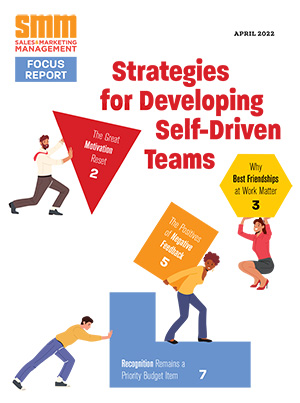 We’ve all heard about organizations with great strategies that somehow fail to execute in the marketplace. We also know of organizations that have long-term, highly satisfied customers who, for some mysterious reason, stop buying.
We’ve all heard about organizations with great strategies that somehow fail to execute in the marketplace. We also know of organizations that have long-term, highly satisfied customers who, for some mysterious reason, stop buying.
On the surface, it is easy to say that there are many uncontrollable factors contributing to these problems, such as politics or a global economic crisis. However, some organizations continue to enjoy greater levels of success in spite of these external forces. These organizations succeed because of something called engagement — a factor that may be playing a more significant role in business than previously believed.
Engagement represents the conditions under which people (employees and customers alike) make an emotionally based choice to be loyal to a company. For customers, this choice is typically demonstrated as reliable, repeat business and voluntary, positive brand support. Employees demonstrate engagement through a positive expenditure of their discretionary energy and a clear commitment to the organization’s vision, strategies and goals.
The results of these choices are evident, with studies supporting the notion that “high engagement” organizations enjoy higher productivity and profits than “low engagement” organizations. Engaged customers provide greater revenue, sustain market share, and are less susceptible to being drawn away by competitors. Engaged employees provide greater productivity with higher levels of performance and are less likely to
be drawn away by bigger salaries or better working conditions.
While the benefits of engagement are well defined, these same studies also suggest an increased movement away from engagement for employees. These studies clearly indicate that only a very small percentage of employees are fully engaged in most organizations, and an increasing number of employees are disengaging — sometimes by seeking employment elsewhere or (potentially worse) remaining in a position without putting forth the necessary energy or commitment.
This is not news to many. Comments from leaders indicate that while they understand the importance of engagement, they find themselves fraught with more questions than ideas about actually creating employee engagement.
Traditional approaches focus leaders in the wrong place
A first step toward addressing this issue is to clarify the relationship between employee and customer engagement. Many experts today encourage leaders to “create customer engagement,” implying that this is under a leader’s direct control. The reality is that leaders can only create customer engagement through their employees. Successful leaders realize that to create customer engagement, they have to first create the conditions for employee engagement. Only then can leaders direct their employees’ energies toward creating the conditions for customer engagement. The bottom line is, to keep engaged customers, an organization must first have engaged employees.
Engaged customers appear when engaged employees become an unexpected addition to the customer experience. At the customer interface, this addition is obvious. For example, it’s easy to see an emotional connection in action when you as a customer feel that everybody knows your name at the corner coffee shop. What is less obvious, but just as critical, is the engagement of those employees behind the scenes — those who are responsible for the quality of the products, operations and processes. Great relationships will not make up for bad coffee, uncompetitive prices or failures to maintain cleanliness in the coffee shop. Thus, all leaders, not just sales and service leaders, must focus on employee engagement.
But what exactly do leaders with engaged employees do differently? These leaders understand the importance of managing products, policies and operations. However, they also devote as much or more energy on creating the conditions for engagement. While it is ultimately an employee’s decision whether or not to be engaged, these leaders create the working and cultural conditions in which employees are recognized and valued, and feel challenged by their work.
When times are difficult, many leaders tend to focus on the numbers and become controlling, which ultimately results in less engagement. Successful leaders recognize that they need to create the conditions under which employees choose to be engaged, and that doing so results in customer engagement.
Leading with both form and essence
So how do leaders create the conditions for engagement?
Leaders need to demonstrate a clear genuineness in their actions toward employees. Just as a shouted, well-trained, habitual, “Welcome to _______!” does little to evoke a genuine emotional connection as customers enter a retail establishment, less-than-authentic behavior from leaders fails to motivate employees to engage. Unfortunately, employees have seen far too many examples of less-than-genuine communication from leaders. Fortunately, there is something leaders can do about that perception. They can pay attention to two factors at play in the art of creating emotional connections — Essence and Form: the being and the doing of leadership.
Essence is the quality of being a leader. It involves the values, emotional characteristics, and clarity of purpose required to foster engagement. Think about the person in your life who had the most impact on you as a leader —
a person to whom you felt compelled to give your energy and commitment. Most likely, it was someone who had a strong sense of Essence as a leader.
Form is what a leader says or does. It represents those decisions, actions, and behaviors that demonstrate the leader’s Essence. Key here is consistency; Form always reveals Essence. Self-serving or organizationally-biased leadership behaviors will rarely produce employee engagement. Instead, leaders need to understand their role in creating a culture of engagement, and act with consistency between what they want to be as leaders and what they actually do.
Tom Roth is Chief Operating Officer at Wilson Learning Worldwide. He assists executive leadership teams with issues related to employee engagement, sales force effectiveness, leadership development, strategy alignment and business transformation. Roth is a frequent international speaker representing Wilson Learning’s point of view on a variety of issues, including leadership, sales, employee engagement, change, strategy implementation, and customer engagement.


